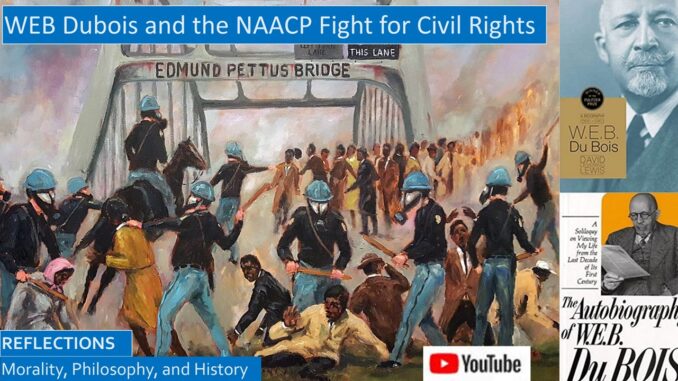
In our continuing series of blogs and videos on WEB Du Bois, we will now reflect on these questions, among others:
- What role did he play in making the NAACP the leading black activist organization?
- How did he increase awareness of civil rights issues among Americans?
- What were the tensions between him and the NAACP?
When studying the life and career of WEB Du Bois, we can ask ourselves another key question:
- Why was he such a contrarian?
YouTube video for this blog: https://youtu.be/MNhkq69CIfo
Script with Amazon book links: https://www.slideshare.net/BruceStrom1/web-du-bois-and-the-naacp-continuing-the-fight-for-civil-rights
Perhaps his contrarian character was a reaction to the degree to which his relatives controlled the life of his unhappy unmarried mother. His self-sufficient confidence helped him seek the scholarships needed to attend college first at the Deep South Fisk University, then Harvard University, then the University of Berlin, sitting for his PhD at Harvard. This liberal arts education prepared him for the civil rights struggles he fought all his life.
When he gained national prominence through his articles and books, his contrarian activism for civil rights caused public tensions with the Tuskegee Machine of Booker T Washington, a black leader who sought accommodation and encouraged blacks to work hard and save their pennies. WEB Du Bois was a main founder of the activist civil rights organization, the NAACP. He chose to be the editor of the Crisis, the magazine of the NAACP, where he insisted on editorial freedom roughly in line with the views of the NAACP, which often caused conflicts.
Another co-founder of the NAACP was Ida B Wells, a brave journalist who dedicated her life to publicize the all-too-common lynchings of blacks. During its early years, the Crisis included a monthly tally of lynchings so it would be continually in the public eye. He fought off a request to also list black crimes in fairness.[1] WEB Du Bois was not an administrator, so he wisely left the administration of the NAACP to others, with whom he butted heads.
As a practical matter, although the NAACP did not support greater segregation of the races, battling existing segregation was not a priority in its early years. WEB Du Bois states that the NAACP “was not, never had been, and never could be an organization that took an absolute stand against race segregation of any sort under all circumstances.”
The NAACP did say, “No discrimination based on race and color.” But as WEB Du Bois pointed out, in the World War I years, that the NAACP could not plan on what actions would be taken if this discrimination was alleviated, which started to happen in the years leading up to 1954, the year of the Brown decision desegregating public schools.[2]
CIVIL RIGHTS UNDER WOODROW WILSON AND WORLD WAR I
The old Tuskegee Machine was primarily focused on funding black colleges, this role was assumed by the colleges themselves going forward. In contrast, the NAACP focused on litigating civil rights issues to slowly roll-back discriminatory laws. 1915 was a banner year, court victories included a Supreme Court ruling that Oklahoma’s grandfather clauses, unfairly restricting the Negro vote, was unconstitutional.[3]
But 1915 was also a landmark in the history of cinema, the first full-length movie was a marvel of technological innovation, The Birth of a Nation, which unfortunately was a disaster for civil rights. This movie depicted the KKK night riders as modern-day knights, rescuing southern damsels in distress from darkies with bulging eyes. This movie is also infamous for its depictions of black Reconstruction state legislators eating fried chicken at their desks, oblivious to the proceedings. WEB Du Bois stated that the “Negro was represented either as an ignorant fool, a vicious rapist, a venal tool of unscrupulous politicians, or a faithful but doddering idiot.” In contrast, our biographer Lewis states that President Woodrow Wilson “exclaimed that the Birth of a Nation was ‘like writing history with lightning,’ and that it was ‘all so terribly true.’”
This movie rejuvenated the Ku Klux Klan that had been decimated by Grant’s federal troops during Reconstruction. WEB Du Bois noted that the “number of mob murders so increased that nearly one hundred Negroes were lynched during 1915 and a score of whites, a larger number than had occurred for more than a decade.” Our biographer notes that “the paradox was that the Birth of a Nation and the NAACP helped make each other. Du Bois was quick to appreciate that the fight against the film ‘probably succeeded in advertising it even beyond its admittedly notable merits.’ But the fight also mobilized thousands of black and white men in large cities” “who had been unaware of the existence of the NAACP.” The NAACP succeeded in blocking its showing in many large cities, these legal challenges lasted for several years.[4]
These early years of the administration of the Southerner President Woodrow Wilson saw many rollbacks of civil rights gains. The Republican President Roosevelt had appointed many black officeholders in the federal government, and Taft, the next Republican President, had appointed fewer black officeholders, but shortly after Wilson’s Inauguration, blacks were purged wholesale from the federal positions, and segregation of restrooms, cafeterias, public parks, and transportation was enforced.[5] WEB Dubois admits his frustration, “blacks continually submit to segregated schools, ‘Jim Crow’ railroad cars, and isolation because it would be suicide to go uneducated, stay at home, and live in the ‘tenderloin.’”[6]
After war was declared against Germany, there was some apparent success in dealing with the Wilson administration, possibly because the country was facing a labor shortage due to the war. Wilson had condemned lynchings, and the armed forces had commissioned over 700 Negro officers.[7] But when blacks were accepted into the military, often they were often abused by white officers, and were often forbidden to go on leave.[8] Not all Negro soldiers were laborers, tens of thousands of Negro soldiers fought in the trenches, some with distinction.[9]
Despite the mixed record of the Wilson administration on civil rights, WE Du Bois penned his “Close Ranks” editorial in the Crisis in July 1918, where he proclaims, “Let us, while this war lasts, forget our special grievances and close our ranks shoulder to shoulder with our white fellow-citizens and the allied nations that are fighting for democracy.”[10] The hope was that if the Negroes proved their worth on the battlefield, they would win concessions on civil rights issues after the war.
Events would prove this to be a quixotic hope. In 1917, before the end of the war, race riots exploded in East St Louis where there were tensions between striking white workers and the blacks hired to replace them at a much lower wage. The homes of six thousand blacks were destroyed, many fled the city never to return. Detailed accounts of the riots by brave reporters were published in the Crisis magazine.[11]
After WEB Dubois returned from observing the Peace Conference negotiating the Treaty of Versailles after the end of the war, he penned another famous editorial on Returning Soldiers, which helped redeem him in the eyes of many who had criticized his “Close Ranks” editorial.
WEB Du Bois proclaims: “We are returning from war! The Crisis and tens of the thousands of black men were drafted into a great struggle.” But “we are cowards and jackasses if now that the war is over, we do not marshal every ounce of our brain and brawn to fight a sterner, longer, more unbending battle against the forces of hell in our land.”
“We return. We return from fighting. We return fighting.”
But most of the fighting was by white men when the violent Red Summer Race Riots erupted in 1919. As Lewis states, there were “race riots on a national scale, flight out of the South of hundreds of thousands of African-Americans, the explosion of labor strikes from coast to coast shutting down shipyards, coal mines, steel works,” “and the panic inspired by the Bolshevik revolution in Russia,” each “made race relations far worse than they already were.”[12] As was typical, there was no due process for blacks, no compensation, no protection from white rioters burning down black business, churches, and homes.
NAACP CONTENDS WITH THE RADICAL MARCUS GARVEY
Previously, the Tuskegee Machine was the leading spokesman for civil rights, and WEB Du Bois was the activist upstart, but now that the NAACP was the leading activist organization, others played the role of the activist upstarts who offered more radical, more popular solutions. For a time, the leading upstart was Marcus Garvey, and Lewis notes that the blacks attending his meetings were “younger, angrier, poorer, and darker than the typical card-carrying members of the NAACP.” He bellowed that “Wilson’s war was a white man’s calamity having nothing to do with black people.”
Although WEB Du Bois initially praised Marcus Garvey, he was gullible and not a good businessman, promoting grandiose schemes, including “a grocery chain, restaurant, laundries, real estate investments, a publishing house, and an autonomous community in Liberia.” The most grandiose scheme of all was starting up the Black Star Line in 1919, a black-owned steamship company. Of course, he was conned, he paid far more than he should for these steamships, which were far more expensive to run and maintain than he could have imagined.[13]
In his Autobiography, WEB Du Bois remembers that when Marcus Garvey “began to collect money for his steamship line, I characterized him as a sincere and hard-working idealist but called his methods bombastic, wasteful, illogical and almost illegal and begged his friends not to allow him foolishly to overwhelm with bankruptcy and disaster one of the most interesting spiritual movements of the modern world. But Garvey went ahead, wasted his money, got into trouble with his authorities, and was deported,”[14] since he was a native of Jamaica. He also wasted the money of investors in his steamship company, he had few defenders when the government indicted him on a charge of mail fraud.[15] His reputation was stained when he conferred with the KKK and then was convicted to five years in jail and a thousand dollar fine,[16] but he was still popular enough to cause trouble after he served his time.[17]
CIVIL RIGHTS AND INTERWAR AMERICAN PRESIDENTS
The Democrats opposed civil rights, the Southern President Woodrow Wilson reinforced segregation in the federal government. Since after the Progressive Era the Republican Party was seen as the party of big business, civil rights issues were no longer one of the party’s planks. WEB Dubois does not directly mention the three Presidents after Wilson in his autobiography.
In Lewis’ biography, we have a brief mention of Warren G Harding, the President succeeding Wilson. There were plans to staff the Tuskegee Veteran’s Hospitals with an all-white staff, causing contraversy, but President Harding instructed the Civil Service Commission to find qualified Negroes to staff the hospital.[18]
When black delegates attended the Republican Convention of 1924, they discovered that chicken wire was strung around the section assigned to them, separating them from the other delegates. The KKK had increased influence, by a one vote margin the Democratic Convention refused to condemn the Invisible Empire for its anti-Catholic, anti-Semitic, and racist agenda. Although the third-party Progressive Party under Robert La Follette had no clear positions on race, WEB Du Bois supported their more progressive agenda.[19]
Calvin Coolidge was the next Republican President. When the Senate defeated a development loan for Liberia, a nation that had been settled by former American slaves, Coolidge appointed WEB Du Bois as a special envoy to Liberia. The State Department thought he went overboard when he visited Liberia in a top-hat and tails, proclaiming that many Americans took a keen interest in the fate of America’s sister republic.[20]
This minor victory was overshadowed by the ugly racial politics of the Great Mississippi Flood of 1927, also during the Coolidge Presidency, with the relief efforts overseen by the future President Herbert Hoover. Devastation was massive, laborers were needed, so thousands of blacks were forced to labor under peonage, they were accused of not paying for relief supplies! Undercover reporters from the Crisis revealed that these peon laborers were forced to sleep in concentration camps and boxcar prisons, and these reports were confirmed by a long-delayed Congressional investigation.[21]
Our biographer Lewis states that, “Building on Coolidge, Hoover accelerated the policy of whitening the GOP below the Mason-Dixon line in order to bring about a major political realignment.” Pretending to fight corruption, “Hoover authorized the removal of Negroes serving on the Republican National Committee and as state chairmen in the South.”[22] Later, WEB Dubois in the Crisis proclaimed that when the Republican Herbert Hoover was elected President in 1928, it was a victory for Wall Street and the KKK.[23]
DEPRESSION, THE NEW DEAL, AND THE NAACP
The Depression struck blacks particularly hard. Many signs in the Deep South and elsewhere advertised that there were “no jobs for niggers until every white man has a job,” and whites, desperate for work, took jobs customarily filled by blacks, such as collecting garbage and cleaning streets.[24] WEB Du Bois notes that in many great cities “more than a third of the Negroes went on public charity and more ought to have been helped but suffered deliberate discrimination in the South. In addition to this, the greater tragedy was the loss of thousands of farms and homes, the disappearance of savings among the rising Negro middle class, the collapse of Negro business, including banks, insurance companies, and retail businesses.” Sometimes poorly paid blacks were replaced by better paid whites.[25]
The New Deal of FDR started many programs to offer relief and public work jobs to unemployed Americans, but since the states administered many of these programs, blacks were often excluded in the first two years of the programs. Harold Ickes of the WPA (Works Progress Administration) proclaimed no racial discrimination, but the implementation was discriminatory. But the NAACP had a friend in Eleanor Roosevelt, who saw it as her job to lobby her husband for more human civil rights policies![26] Later in his administration, FDR did adopt policies ensuring more blacks would benefit from the New Deal programs.
ELEANOR ROOSEVELT AND FDR GIVE NEGROES HOPE
The NAACP had been trying to convince Congress to pass an anti-lynching law for many years. Another anti-lynching bill was defeated in 1938. Eleanor Roosevelt and the black leaders were pushing FDR and Congress to pass the anti-lynching bill when the entire world was witnessing the horrors of the Nazi persecutions of the Jews.
FDR was sympathetic, he explained to a colleague that “the southerners by reason of the seniority rule in Congress are chairmen of the key Congressional committees. If I come out for the anti-lynching bill, they will block every bill I ask Congress to pass to keep America from collapsing. I just can’t take that risk.” So, FDR had a choice, he could fight the Nazis, or he could fight lynching, but he could not do both. And, defeating the Nazis was an attainable goal.
Eleanor persisted in public speeches and her newspaper column in support of the anti-lynching campaign, constantly badgering her husband. Once she asked FDR, “Do you mind if I say what I think?” FDR replied, “You can say anything you like. I can always say, ‘Well, that is my wife; I can’t do anything about her.’” This supposed conflict was a good political way to push for civil rights without unduly antagonizing the powerful Deep South Senators and Congressmen. [27]
What is distressing about this history was that the bill was not against lynching itself, but it put legal pressure on Southern judges and policemen to enforce the law and punish those who were guilty of lynching, instead of just ignoring the crime.
One symbolic gesture that gave Negroes hope that someday their lives would improve was the Marion Anderson concert. Not only was Marion Anderson black, she was also a renowned contralto opera singer who toured Europe, singing to large crowds, and wanted to give a concert in Washington, DC. The DAR, or Daughters of the American Revolution, had a suitable concert hall, but they refused to rent the hall to a black singer, as did all the other venues. Eleanor Roosevelt and Howard Ickes arranged for her to sing at the Lincoln Memorial, and it was carried by the radio stations across the country. Professor Holloway, a former Yale professor, describes how this inspired and encouraged so many blacks in America.[28]
Although civil rights were not a major focus of the FDR administration, due to the Southern congressmen dominating Congress, there were major improvements made that helped blacks economically, with a real promise of future civil rights gains. These small improvements convinced many blacks to switch their allegiance to the Democratic Party.
There were real civil rights gains under President Harry Truman, when he issued an Executive Order desegregating the Armed Forces. In 1947 Harry Truman was the first President to address a national NAACP Convention, speaking to an audience of ten thousand from the Lincoln Memorial. Eleanor Roosevelt had preceded him to the podium.[29]
WEB DUBOIS RESIGNS FROM THE NAACP
WEB Du Bois actively supported the international Pan-African movement, but the NAACP was too engrossed in the civil rights struggle in America to concern itself with challenging colonialism overseas. WEB Du Bois concluded that he “was out of touch with my organization and that the question of leaving it was only a matter of time, especially as the Crisis magazine was no longer self-supporting.”[30] Although the Crisis benefited from a well-timed grant, the Depression had greatly reduced the number of subscribers. The Crisis was not as critical to the success of the organization as in the earlier years, the legal and other activities of the NAACP had increased in importance. There were tensions between him and the Executive Secretary since 1929, Walter White, who was more of a hands-on manager than his predecessor.[31]
Ever the contrarian, WEB Dubois penned an article entitled “Segregation” in the Crisis, surprising readers and the NAACP board that although segregation had meant racial discrimination, this did not have to be so, explaining that “there should never be an opposition to segregation pure and simple, unless that segregation does involve discrimination.” Segregated schools, churches, and public facilities were anathema only because they had been inferior. The NAACP insisted that he retract this statement, and he refused.[32]
Why were there were tensions between WEB Du Bois and the new secretary for the NAACP, Walter White? White viewed WEB Du Bois as an employee of the NAACP, and expected that he should behave like an employee, taking directions from the boss, which was something WEB Du Bois would never do.[33]
WEB Du Bois resigned from the NAACP in 1934 and was hired back by Atlanta University to head its Department of Sociology! In its public statement, the NAACP board stated his contribution as the contrarian editor of the Crisis, “A mere yes-man could not have attracted the attention of the world, could not even have stimulated the NAACP Board to further study various important problems.”[34]
In our last video on WEB Du Bois, we will examine the question, Was WEB Du Bois a communist?
How did the NAACP view the American Communist Party? And we will reflect on the last decades of the long and eventful life of WEB Du Bois.
YOUTUBE
DISCUSSION OF SOURCES:
We prefer reading the autobiographies of black civil rights leaders because we want them to speak for themselves. But his autobiography suffers from the fatal flaw that he assumes we already know the history of the NAACP and America during the Jim Crow and civil rights eras.
For the videos on the latter part of our life, we used as our primary source the excellent biography by David Levering Lewis. WEB Du Bois left out key facts critical for our understanding of the struggles the NAACP faced after it was founded. In part, he was selective in his telling of the many conflicts between him and the board, due to his contrarian nature.
[1] WEB Du Bois, the Autobiography of WEB Du Bois (Canada International Publishers, 1968, 2007), p. 257.
[2] WEB Du Bois, the Autobiography of WEB Du Bois, pp. 296-297.
[3] David Levering Lewis, A Biography (New York: Holt Paperback, 2009), WEB Du Bois, p. 315.
[4] David Levering Lewis, A Biography, WEB Du Bois, pp. 330-332.
[5] David Levering Lewis, A Biography, WEB Du Bois, p. 332.
[6] David Levering Lewis, A Biography, WEB Du Bois, p. 347.
[7] WEB Du Bois, the Autobiography of WEB Du Bois, p. 274.
[8] David Levering Lewis, A Biography, WEB Du Bois, p. 349.
[9] David Levering Lewis, A Biography, WEB Du Bois, p. 369.
[10] David Levering Lewis, A Biography, WEB Du Bois, p. 363.
[11] David Levering Lewis, A Biography, WEB Du Bois, pp. 350-352
[12] David Levering Lewis, A Biography, WEB Du Bois, p. 381.
[13] WEB Du Bois, the Autobiography of WEB Du Bois, pp. 417-399
[14] WEB Du Bois, the Autobiography of WEB Du Bois, p. 273.
[15] David Levering Lewis, A Biography, WEB Du Bois, p. 428.
[16] David Levering Lewis, A Biography, WEB Du Bois, pp. 432-434.
[17] David Levering Lewis, A Biography, WEB Du Bois, pp. 465-468.
[18] David Levering Lewis, A Biography, WEB Du Bois, p. 438.
[19] David Levering Lewis, A Biography, WEB Du Bois, p. 500.
[20] David Levering Lewis, A Biography, WEB Du Bois, p. 456.
[21] David Levering Lewis, A Biography, WEB Du Bois, pp. 501-502.
[22] David Levering Lewis, A Biography, WEB Du Bois, p. 503.
[23] David Levering Lewis, A Biography, WEB Du Bois, p. 506.
[24] David Levering Lewis, A Biography, WEB Du Bois, p. 535.
[25] WEB Du Bois, the Autobiography of WEB Du Bois, pp. 303-304.
[26] David Levering Lewis, A Biography, WEB Du Bois, pp. 565-566.
[27] Doris Kearns, No Ordinary Time (New York: Simon and Schuster, Touchstone Book, 1994), pp. 163-164.
[28] Jonathon Holloway, Yale African American History: Emancipation to the Present, Lecture 12
[29] David Levering Lewis, A Biography, WEB Du Bois, p. 673.
[30] WEB Du Bois, the Autobiography of WEB Du Bois, pp. 297-298.
[31] David Levering Lewis, A Biography, WEB Du Bois, pp. 532-535.
[32] David Levering Lewis, A Biography, WEB Du Bois, pp. 568-573.
[33] WEB Du Bois, the Autobiography of WEB Du Bois, pp. 290-293.
[34] WEB Du Bois, the Autobiography of WEB Du Bois, p. 299.

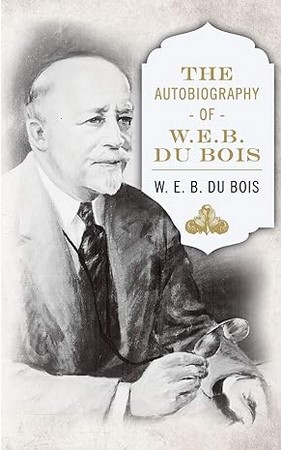
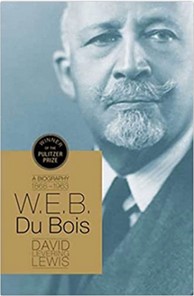
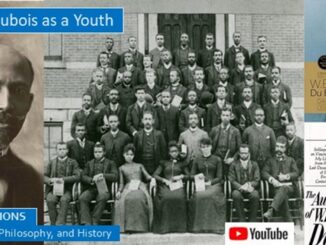

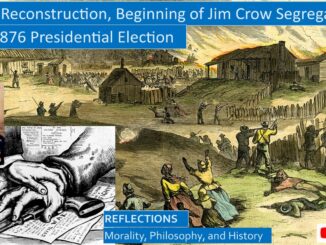
7 Trackbacks / Pingbacks